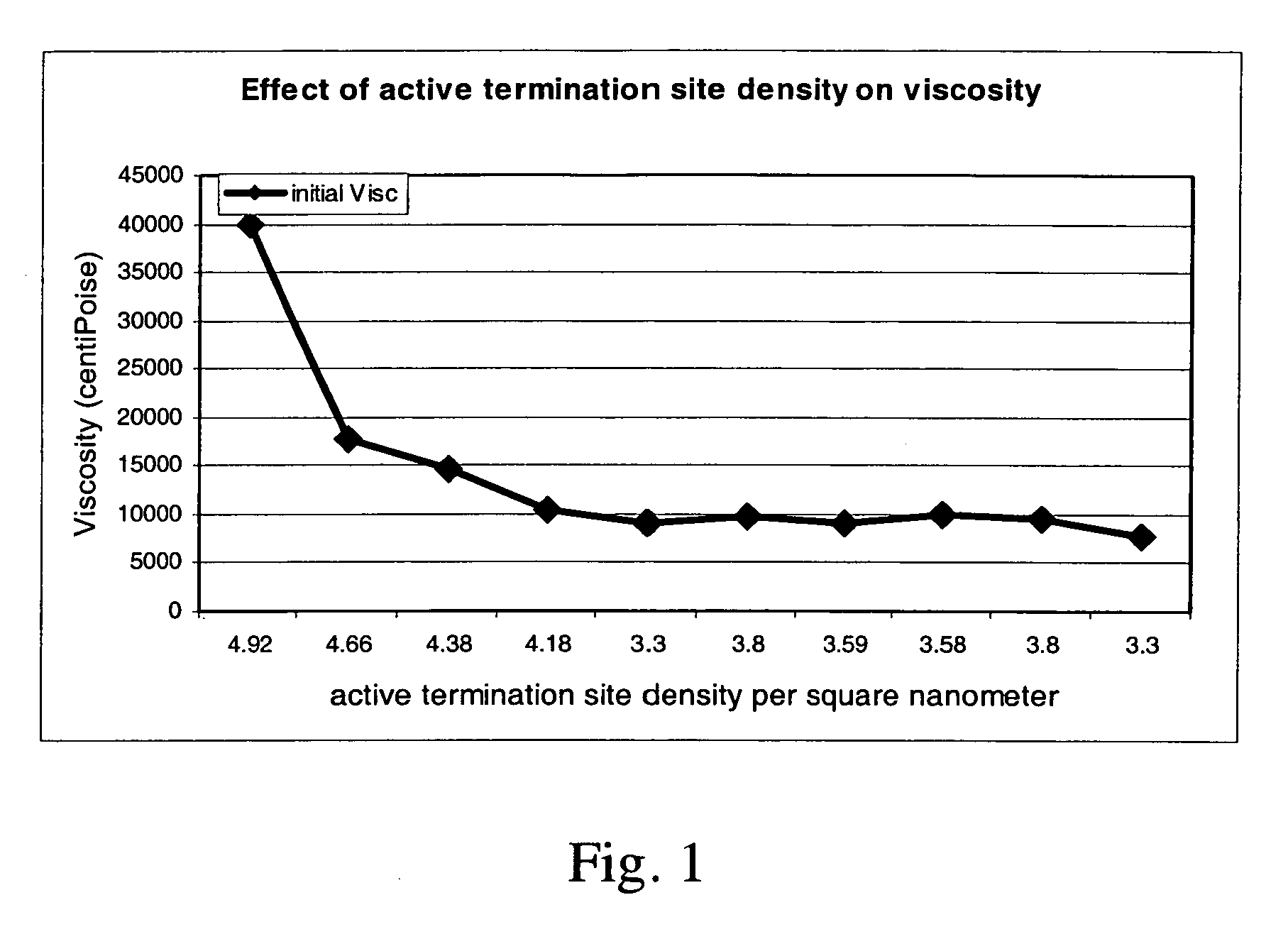Curable composition, underfill, and method
a composition and composition technology, applied in the field of curable compositions, can solve the problems of difficult processing, mechanical and electrical failure of the electronic device, and undesirable mechanical stress of the flip chip construct, and achieve the effects of enhancing performance, reducing the area of dies, and reducing the number of parts
- Summary
- Abstract
- Description
- Claims
- Application Information
AI Technical Summary
Problems solved by technology
Method used
Image
Examples
example 1
Preparation of Compatibilized and Passivated Silica Particle Predispersion
[0136] A compatibilized and passivated silica particle predispersion is prepared by combining the following: 935 grams of isopropanol is slowly added while stirring to 675 grams of aqueous colloidal silica containing 34 weight percent of silica particles having an average diameter of 20 nanometers. Subsequently, 58.5 grams phenyl trimethoxysilane (PTS) are dissolved in 100 grams isopropanol, and are added to the stirred mixture. The mixture is heated to 80 degrees Celsius for 1-2 hours to afford a transparent suspension. The resulting suspension of compatibilized and passivated silica particles is stored at room temperature. Multiple dispersions, having various levels of silica (from 10 weight percent to 30 weight percent) are prepared for use in Example 2.
example 2
Preparation of a Composition of a Curable Resin and Compatibilized and Passivated Silica Particles
[0137] A round bottom 2000 ml flask is charged with 540 grams of each of the pre-dispersions, prepared in Example 1. Additional pre-dispersion compositions may be shown in Table 1, below. 1-methoxy-2-propanol (750 grams) is added to each flask. The resulting dispersion of compatibilized and passivated silica particles is vacuum stripped at 60 degrees Celsius and 60 mmHg to remove about 1 liter (L) of solvent. The vacuum is slowly decreased and solvent removal continued with good agitation until the dispersion weight reaches 140 grams. The transparent dispersion may include compatibilized and passivated silica particles at about 50 weight percent silica, and may have no hydrophilic precipitated silica. The dispersion is stable at room temperature for more than three months. The results in Table 1 show that a cartain level of phenyl functionality may be useful to prepare a concentrated, ...
example 3
Preparation of a Composition of a Curable Resin and Compatibilized and Passivated Silica Particles
[0138] A solution combining 5.33 grams of epoxy cresol novolac (ECN 195XL-25 available from Sumitomo Chemical Co.), 2.6 grams of novolac hardener (TAMANOL 758 available from Arakawa Chemical Industries) in 3.0 grams of 1-methoxy-2-propanol is heated to about 50 degrees Celsius. A 7.28 gram portion of the solution is added, dropwise, to 10.0 grams of Sample 3 while stirring at 50 degrees Celsius. The transparent suspension is cooled. A catalyst solution of N-methylimidazole in methoxypropanol, 60 microliters of a 50 weight percent (w / w) solution, is added while stirring. The transparent solution is solvent cast into resin films for characterization, and some of the solution is stored at −10 degrees Celsius. Other films are prepared using differing catalysts in various amounts and with some variations in epoxy-type as set forth in Table 2 below.
[0139] Films are cast by spreading a porti...
PUM
| Property | Measurement | Unit |
|---|---|---|
| surface area | aaaaa | aaaaa |
| surface area | aaaaa | aaaaa |
| diameter | aaaaa | aaaaa |
Abstract
Description
Claims
Application Information
 Login to View More
Login to View More - R&D
- Intellectual Property
- Life Sciences
- Materials
- Tech Scout
- Unparalleled Data Quality
- Higher Quality Content
- 60% Fewer Hallucinations
Browse by: Latest US Patents, China's latest patents, Technical Efficacy Thesaurus, Application Domain, Technology Topic, Popular Technical Reports.
© 2025 PatSnap. All rights reserved.Legal|Privacy policy|Modern Slavery Act Transparency Statement|Sitemap|About US| Contact US: help@patsnap.com



